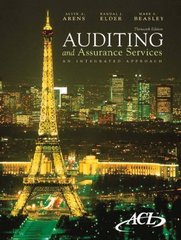Question
Connie Young, an architect, opened an office on October 1, 2019. During the month, she completed the following transactions connected with her professional practice: Transferred
Connie Young, an architect, opened an office on October 1, 2019. During the month, she completed the following transactions connected with her professional practice: Transferred cash from a personal bank account to an account to be used for the business, $36,000. Paid October rent for office and workroom, $2,400. Purchased used automobile for $32,800, paying $7,800 cash and giving a note payable for the remainder. Purchased office and computer equipment on account, $9,000. Paid cash for supplies, $2,150. Paid cash for annual insurance policies, $4,000. Received cash from client for plans delivered, $12,200. Paid cash for miscellaneous expenses, $815. Paid cash to creditors on account, $4,500. Paid $5,000 on note payable. Received invoice for blueprint service, due in November, $2,890. Recorded fees earned on plans delivered, payment to be received in November, $18,300. Paid salary of assistants, $6,450. Paid gas, oil, and repairs on automobile for October, $1,020. Required: 1. Record the above transactions (in chronological order) directly in the following T accounts without journalizing: Cash; Accounts Receivable; Supplies; Prepaid Insurance; Automobiles; Equipment; Accounts Payable; Notes Payable; Connie Young, Capital; Professional Fees; Salary Expense; Blueprint Expense; Rent Expense; Automobile Expense; Miscellaneous Expense. To the left of each amount entered in the accounts, select the appropriate letter to identify the transaction.
Step by Step Solution
There are 3 Steps involved in it
Step: 1

Get Instant Access to Expert-Tailored Solutions
See step-by-step solutions with expert insights and AI powered tools for academic success
Step: 2

Step: 3

Ace Your Homework with AI
Get the answers you need in no time with our AI-driven, step-by-step assistance
Get Started


